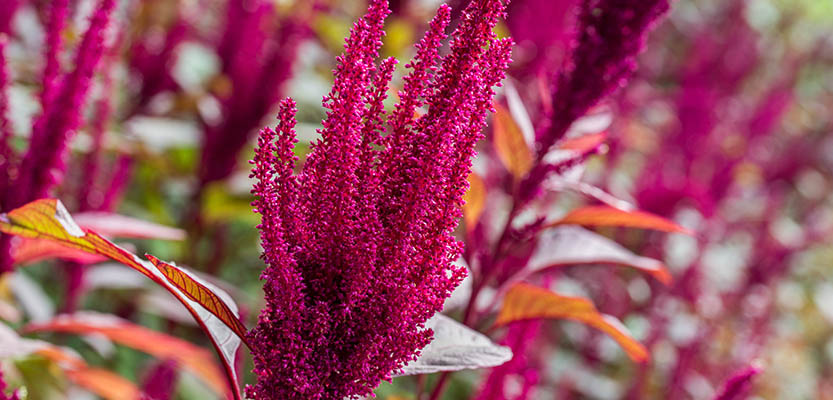
Common Names
Amaranth
Love-Lies-Bleeding
Tassel Flower
Prince's Feather
Scientific Name
Amaranthus caudatus (and other species)
Family & Genus
Family: Amaranthaceae
Genus: Amaranthus
Description
Amaranthus is an eye-catching flower with long, trailing, tassel-like blooms that can grow up to several feet in length. The flowers consist of tiny, densely packed florets that create a rope-like appearance, hanging downwards in graceful cascades. The plant can also have upright, plume-shaped flowers. Amaranthus comes in a range of colors, from deep burgundy and magenta to lime green, red, and gold. The foliage is often large and broad, with varying shades of green or bronze.
Habitat & Origin
Amaranthus is native to tropical and subtropical regions of the Americas but has become widely cultivated and naturalized in many parts of the world. It thrives in warm climates, tolerates dry conditions, and can grow in poor soils, making it a resilient plant.
Symbolism & Meaning
Immortality: In Greek mythology, the name Amaranthus comes from the word “amarantos,” meaning unfading or immortal, symbolizing everlasting life and enduring strength.
Unfading Love: The long-lasting quality of the flowers has also led to associations with eternal or undying love.
Fertility and Abundance: In some cultures, especially where it has agricultural significance, Amaranthus symbolizes prosperity and a bountiful harvest.
Uses
Ornamental: Amaranthus is a popular ornamental plant for both cut flowers and dried floral arrangements due to its unique texture and vibrant colors.
Edible: Some species of Amaranthus, such as Amaranthus cruentus and Amaranthus hypochondriacus, are grown as food crops. The seeds (often called amaranth grain) are rich in protein and can be used in cereals or ground into flour, while the leaves are cooked as a leafy vegetable.
Traditional Medicine: In various cultures, Amaranthus is used in traditional medicine for its purported healing properties, including anti-inflammatory and antioxidant effects.
Flower Care
Amaranthus prefers full sun and well-drained soil. It is drought-tolerant but benefits from regular watering, especially in hot, dry conditions. In arrangements, the blooms can last a week or more, but they are also ideal for drying, as the flowers retain their color and form well when dried.
Flowering Season
Amaranthus blooms in the late summer to early fall. It is often seen in autumn displays but can continue blooming in frost-free areas well into late fall.
Varieties & Hybrids
Amaranthus caudatus 'Love-Lies-Bleeding': The classic variety with long, trailing red or burgundy blooms.
Amaranthus cruentus 'Hot Biscuits': An upright variety with coppery-orange flowers.
Amaranthus tricolor 'Joseph’s Coat': Known for its stunning multicolored foliage, this variety displays brilliant red, yellow, and green leaves.








